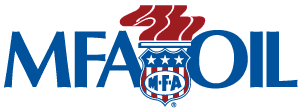
10 Ways to Manage High Input Costs in 2025
February 21, 2025
Written By Linda Geist
University of Missouri Extension agronomist Wayne Flanary says 2025 likely will be a year when corn producers need to batten down the hatches to offset low sale prices and high input costs.
MU Extension ag business economist Ben Brown and others predict that corn prices will fall below the $4.30 mark by the end of 2025, a marked drop from $6.54 per bushel in 2023. For those raising corn, soybean and wheat, the picture is even more dismal, with economists predicting $10.29 per bushel for soybean, compared to $12.40 in 2023. Wheat prices also are expected to plummet to $5.46 per bushel, compared to a high of $8.83 in 2022.That means that producers must closely scrutinize input costs and decisions, says Flanary.
Here are his 10 suggestions:
1. Simplify.
Streamline your operation to allow timely planting and management of your corn crop.
2. Identify profitable field areas.
Profitable areas should be fertilized to maximize returns. Unprofitable areas should receive reduced nutrient application and seeding rates to save money.
3. Soil test.
Plan a nutrient application strategy. Closely examine routine applications and schedules. Use soil test results and cost analysis to guide decisions on nitrogen, phosphorus and potassium. “If soil test P and K values are high, you can use nutrients stored in the soil and skip an application [but] not reduce grain yields,” Flanary says.
4. Scout for pests correctly.
Use your skill set to identify common corn insect and disease pests. Many pests do not approach an economic threshold requiring control. Hybrids may have transgenic events, which also provide protection. Understand that some pests may have a border effect, and effective scouting means looking deeper into the field.
5. Choose hybrids carefully.
Select hybrids with proven track records of high yields across different environments, he says. Choose ones with good resistance to diseases that typically require fungicide treatment. You may be able to use disease resistance to substitute the need for fungicide application. Choose and plant early-maturing hybrids first, and spread your risk by planting later-maturing hybrids last. Large landowners should choose hybrids that can stand in the field waiting for harvest.
6. Plant timely.
Plant when soil conditions are right and allow good soil-to-seed contact. Planting conditions are more important than calendar dates.
7. Use technology.
Use technology to variably apply crop nutrients where they are needed and at the right rate. Use planter technology to place seed correctly and lower populations in poor productive yield areas. Sensor technology can fine-tune supplemental nitrogen rates.
8. Apply herbicides wisely.
Do not cut herbicide application rates, and apply in a timely manner. If weeds escape, apply postemergence products at labeled heights. As plants grow larger, they are harder to control and increase risks for escapes. Manage acres for timeliness.
9. Avoid micro-fixes.
In season, avoid applying small amounts of foliar fertilizers which may not be beneficial. Use university research and examine the probability and magnitude of response of foliar nutrients. However, during a wet May or June, nitrogen can denitrify and be lost. A supplemental application can maintain high yields, and growers should always have a rescue plan. Rescue plans require an adequate nitrogen rate to bring corn out of a deficiency and maintain high yields.
10. Rely on unbiased research.
Use research conducted by universities. Land-grant universities support their recommendations with data.


